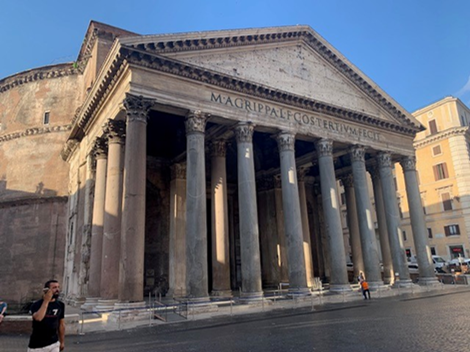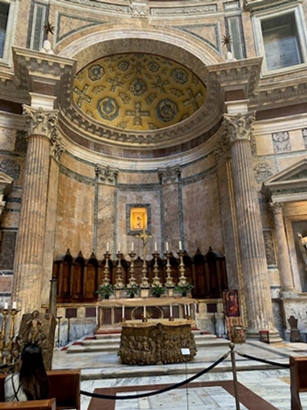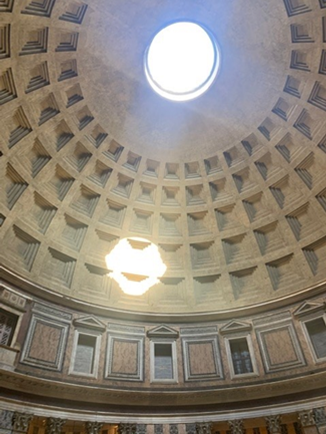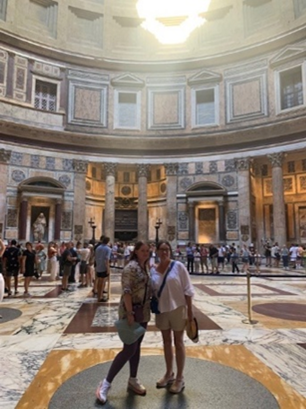After my recent visit to Rome (Italy) during my European trip, I thought it might be interesting to talk about the most impressionable historic site I visited.

While walking around Rome, there is an unbelievable historical site just waiting for you around every corner. However, you do tend to become sort of numb after what seems like the fifteenth historical site / building. Yet the Pantheon is a building that really made an impression. Not only because it’s the best preserved ancient building or its absolute vastness, but because its true nature has been lost.

Way before Rome’s Christians were on the scene (Around 608AD) this pagan temple was standing proud. Founded between 27 and 25 BC and dedicated to Venus, Mars and Julius, paying reverence to 12 different deities plus the ruling King. We can hypothesis that it was used like an observatory, aligned to the sun’s progression through the year. The gigantic hemispheric dome, 43.30 metres diameter, is the biggest dome ever vaulted in brick. The central opening of 9 metres unites with the buildings perfect proportion of its parts, emphasising the constructive cleverness needed to build this. Even today it would be almost impossible to realise such a spheric calotte, perfectly inscribed in a sphere, using the same materials and of the same dimensions. Past scholars have read fascinating symbolic interpretations and esoteric choices, one of them is seeing the monument as a complex image of the Pythagorean universe.

Where the laws of geometry, physics, astronomy and music combine together. Astronomical devices are identified by the light patterns throughout specific hours of the day through the central opening, during solstices and equinoxes. Making the knowledge used for this construction the same lost knowledge needed in the making of Stonehenge. The Pantheon is truly a mystical and well preserved building of our age.

